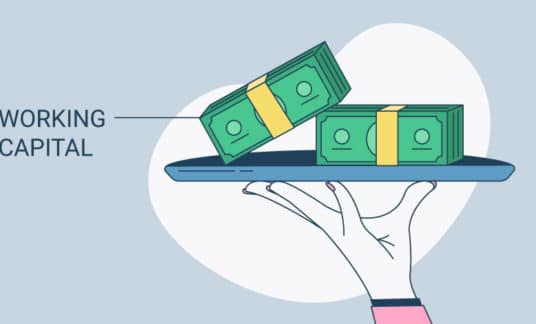Would you rather pay $1,000 up front or $200 a month?
That’s the essence of customer financing programs. In this guide, we’ll dive into the details, cover costs and explore the pros and cons.
What Is Customer Financing?
Customer financing, also referred to as consumer financing, refers to a business extending credit to a customer, whether in-house or through a third-party.
If you’ve ever watched a television shopping channel and seen a product’s price advertised as “5 easy payments,” you have an idea of what customer financing is all about.
By offering payment plans, businesses are able to make costly purchases affordable and entice buyers. Your customers get their products right away and leave happy, hopefully returning again soon.
How to Drive Sales by Extending Credit
A customer financing program could be the only thing standing between your business and a continual inflow of high-ticket sales.
While customer financing was once restricted to big-league companies, new technology is making it something many small businesses can offer. Financing programs can bolster customer loyalty and give you an edge over competitors.
Why Offer Customer Financing?
Customer financing is a win-win for your customers and your bottom line.
- Financing for customers of small businesses gives buyers what they want while letting them pay for it in manageable chunks over time.
- You can raise your prices or introduce higher-ticket items because closing the sale becomes much easier for the customer.
- You’ll see larger basket sizes, more upsells and fewer abandoned carts.
Granted, there are overhead costs or fees involved with offering a financing option, but the return on investment is high.
By opening your high-ticket items to a wider customer base, you’ll drive more sales. Plus, when you offer an affordable solution for your customers, you generate loyalty, satisfaction and word-of-mouth marketing.
Financing even helps your marketing department tailor campaigns around the appeal of an affordable offer that customers can jump on today.
Should You Offer In-House Customer Financing?
If you decide to offer customer financing, you’ll need to choose between in-house customer financing and outsourcing the financing to a third party.
If you offer in-house financing, you’re responsible for staying within legal boundaries of providing credit on purchases. Generally, this means giving the customer all the information surrounding their financing plan, such as the annual percentage rate (APR), amount financed, payment schedule and late fee policies.
Keep in mind you aren’t legally obliged to run credit checks, but screening customers for their creditworthiness can help you minimize the risk of default.
While there likely is more work and overhead costs involved with in-house financing, you can profit from charging interest. Whether to charge interest is something you’ll need to decide, along with the rate at which to charge it.
Pros
- Makes your business look well-established because it has the stability to offer financing for customers
- Opportunity to earn interest and charge fees for financing
Cons
- Less up-front profit and slow cash flow
- Can be risky with the possibility of missed payments
- Running credit checks is costly
- Requires a time investment of staying on top of payments
Should You Outsource Customer Financing to a Third Party?
With more financial technology-enabled companies offering third-party financing, in-house financing isn’t your only option. Outsourcing customer financing to a third party takes a lot of the burden off your business.
In exchange for transaction fees, financing companies handle the entire process for you, from screening customers to collecting payments. Some customer financing companies even assume all the risk and pay you the full amount the customer owes upfront.
This can be ideal for smaller businesses with fewer resources, because they can reap the benefits of a customer financing program without the risk (or the strain on cash flow).
Pros
- Save the time and money it takes to handle customer financing, so you can devote resources to other areas of your business
- Potential to receive full payment up front instead of just the first installment
- Some financing companies for small businesses may offer promotional rates to customers (e.g., 0% for 3 months)
- Financing partners often have widgets or badges you can add to your website next to “buy” buttons to educate the customer about their financing option and the installment payment
- Eliminates the cost of credit checks because your financing partner does their screening
Cons
- Pay transaction fees
- You don’t own the relationship. If a customer has a negative interaction with your third-party financing provider, it could reflect poorly on you.

How to Offer Customer Financing: Best Practices
Asking yourself, “how to offer financing to my customers that also works for me?”
It’s an important question because customer financing can be a game-changer for your business. So make sure you take the right steps when rolling out your program.
Here are some tips and best practices:
Prominently Advertise Customer Financing as a Purchase Option
To get the most out of your customer financing program, do everything you can to make customers aware of the opportunity. If all they see is a large price tag next to your product, they may turn away before learning more about it.
The financing option should always be displayed next to the full price. It should also be prominent throughout your advertising and sales copy.
Create Urgency with Marketing Programs Offering Financing Incentives
Try using a limited-time financing program to generate urgency. The option to get the product now and pay over time sweetens the pot, but a “now or never” incentive can seal the deal. Customers will want to take advantage of the payment plan option before it’s gone.
Temporary offers work best with zero-interest financing plans, so the customer feels they’re at the best end of the deal. If you can offer a zero-down payment financing option as a limited-time program, even better.
Make the Process Easy, Quick and Seamless
Make it as easy as possible for customers to go through the financing approval process. If you’re using a third-party service, be sure to choose one with software that integrates seamlessly with your website or point-of-sale system.
Frustrating technology hurdles can easily cause customers to abandon their carts altogether. Ask for the least amount of information needed. Only ask for more data if it’s required for their approval.
Train Your Sales Team on Customer Financing
Make sure your sales team members know how to use your customer financing incentive to help close sales. They should communicate the affordability the payment plan offers as well as the advantages of having the product now instead of a later date.
Your sales training should help sales representatives become well versed in how your financing program works and how to respond to questions about the program. Any comment or question sales reps get about price should open them to bring up financing options, starting with the lowest possible monthly installment.
Things to Consider With Third-Party Financing Solutions
When looking for a financing company to partner with, be sure to read through their terms. Some companies require you to meet minimum sales thresholds or give away large chunks of financed purchases.
Look into whether a financing company approves customers with less-than-good credit. Many customers looking for a more affordable option may not have high credit scores, so find a company that can service these customers.
Choose a financing service that assumes the risk for you so a customer’s nonpayment won’t affect your bottom line. Also, ensure your financing partner’s application process is easy and seamless so your customers don’t abandon their cart midway through the process.
How Much Does It Cost to Offer Financing to Customers?
Offering third-party customer financing options varies depending on the provider. Most commonly, they charge you a flat fee to use the service or they could charge you a percentage of each sale.
The best small business customer financing solutions take no more than 6% of each financed sale, and may charge a small fixed charge per purchase (e.g., 30 cents).
Here are some financing companies for small businesses to consider as well as the fees they charge:
| Customer Financing Company | Charges to Your Business | Charges to Your Customer |
| Afterpay | 6% plus 30 cents per transaction for the standard package (pricing can be lower depending on factors such as volume and type of good sold) |
|
| PayPal Credit | No additional costs for businesses on PayPal using PayPal credit
(PayPal has flat-rate pricing with a base rate of 2.9% plus 30 cents per transaction) |
|
| ViaBill | 2.9% plus 30 cents per transaction |
|










